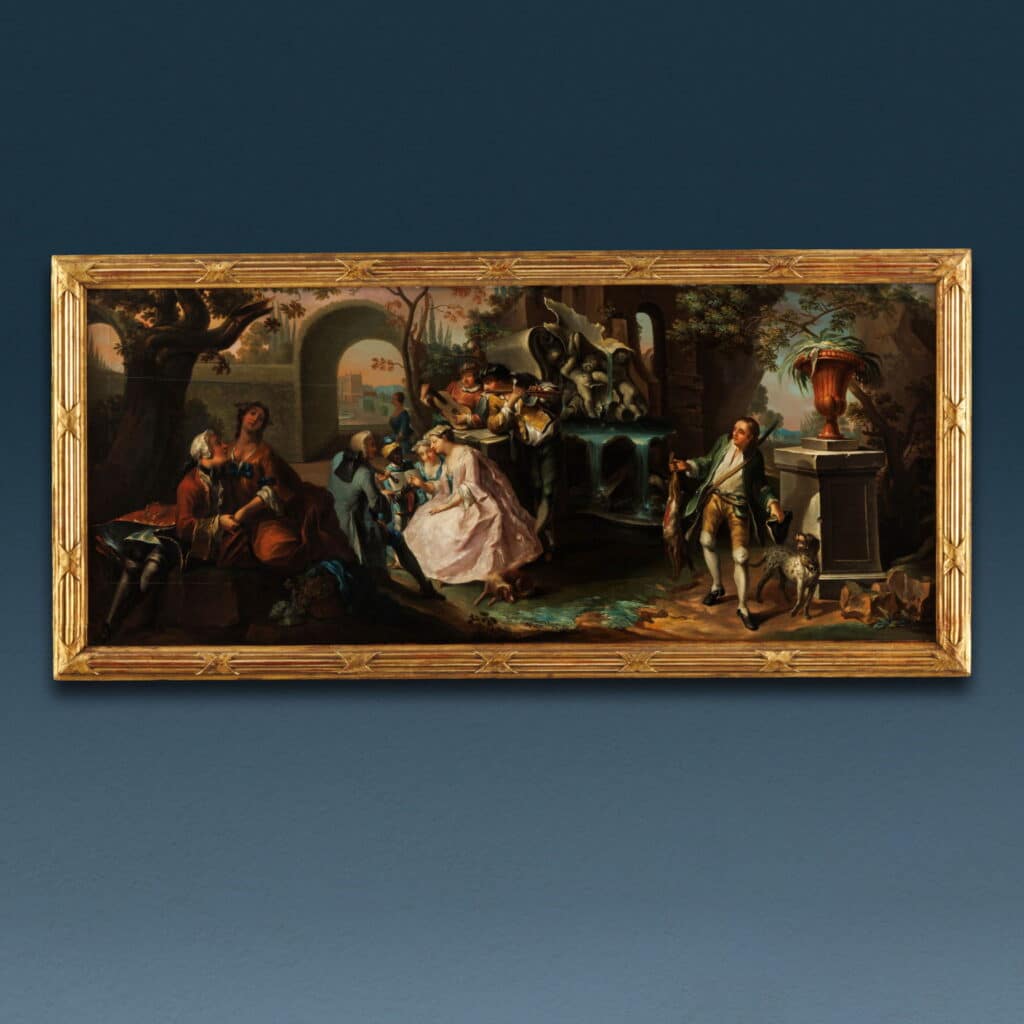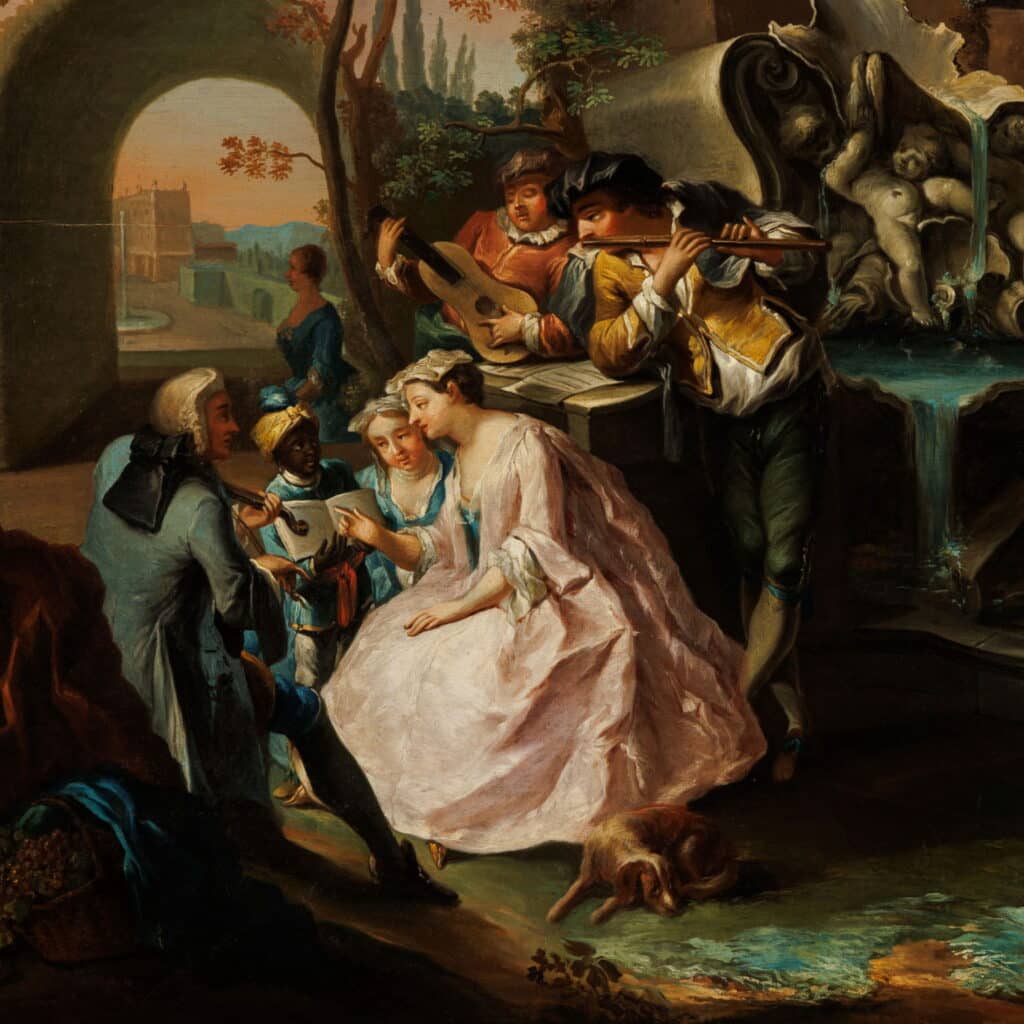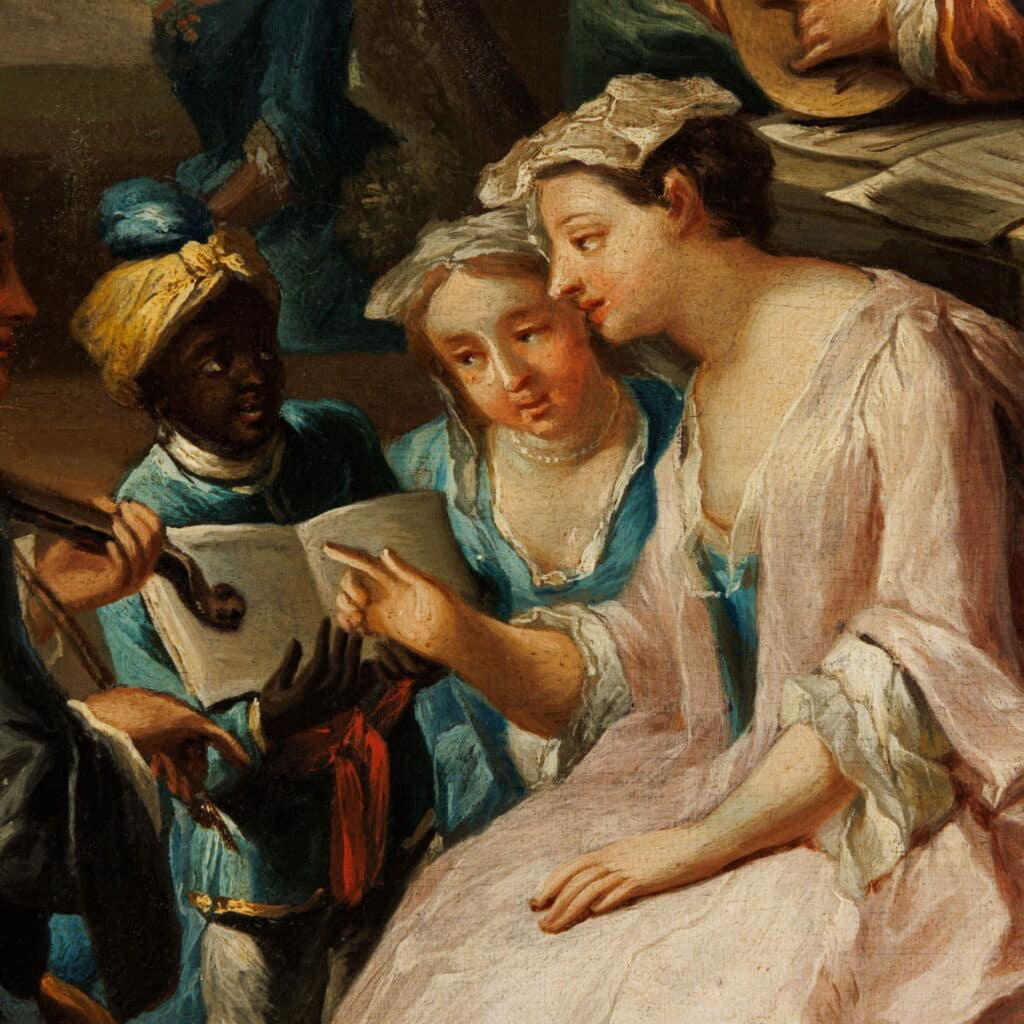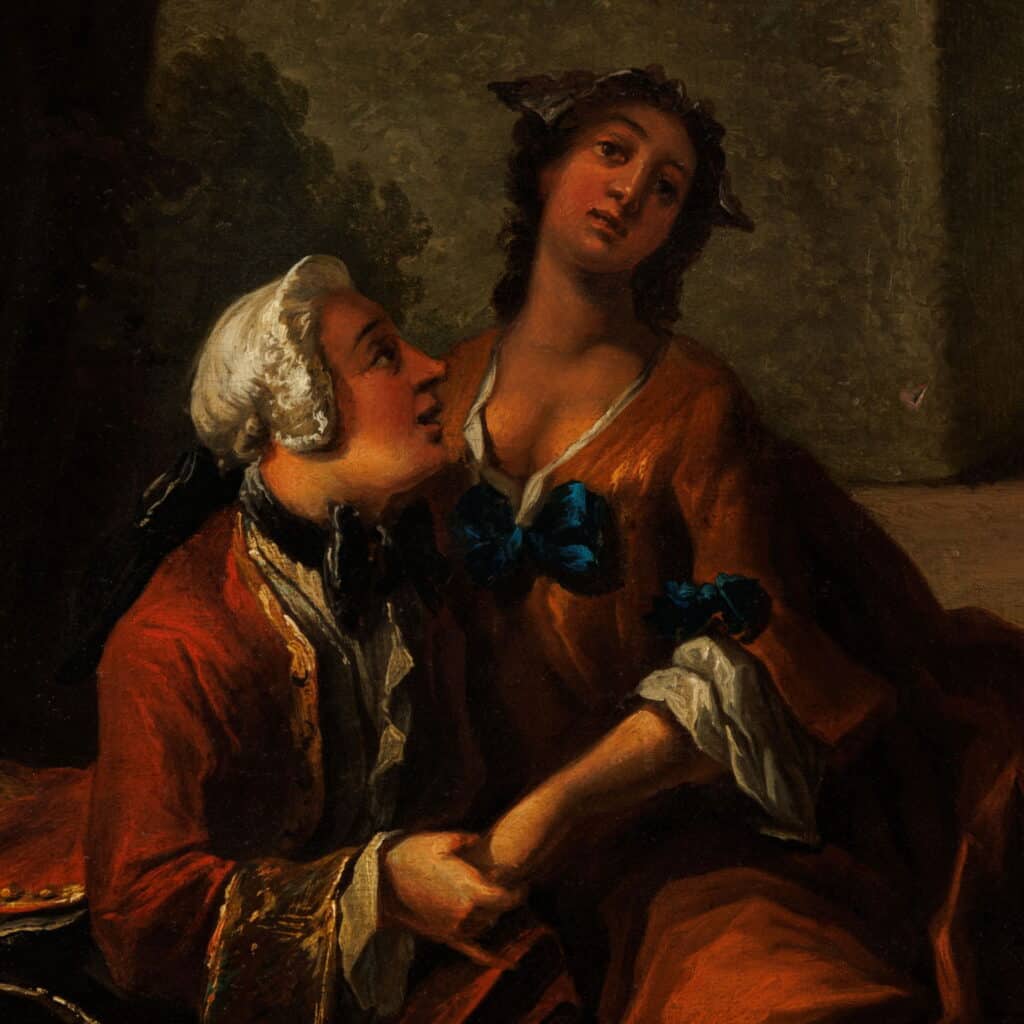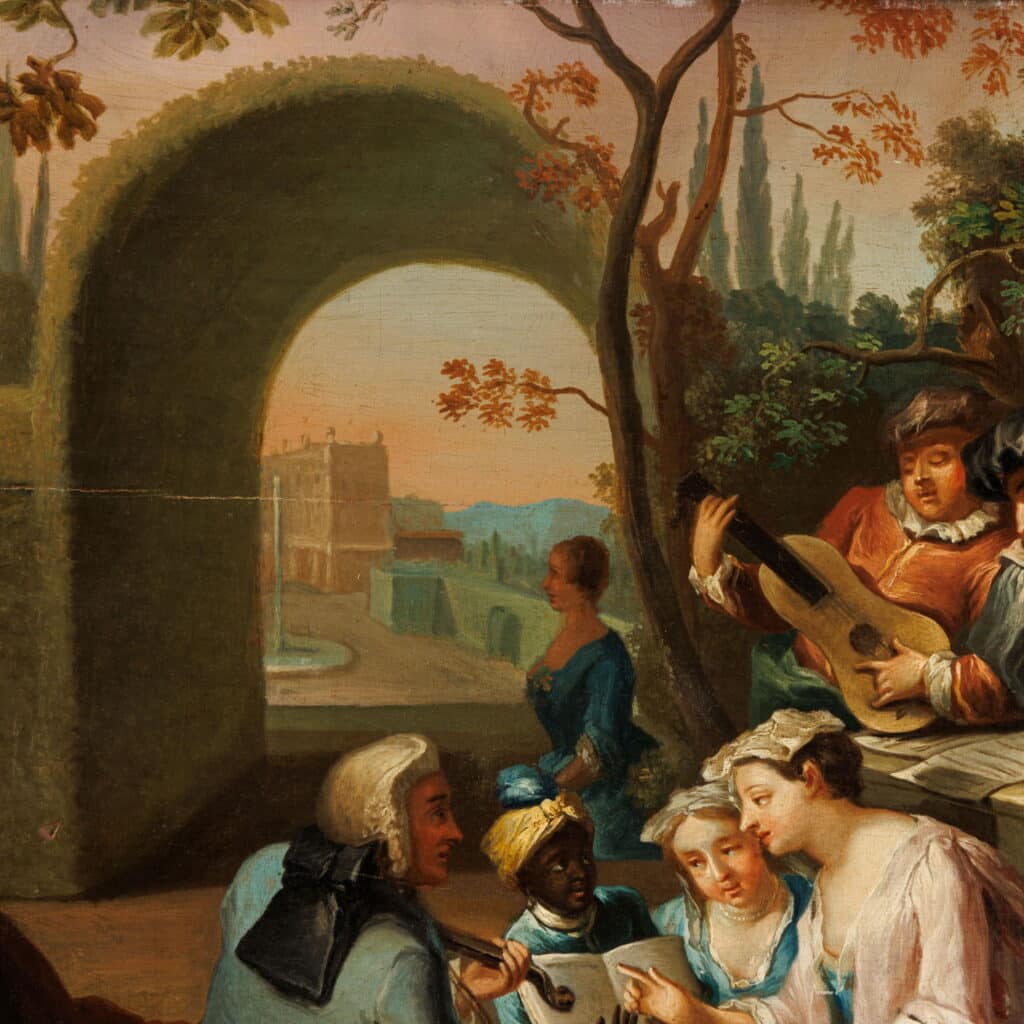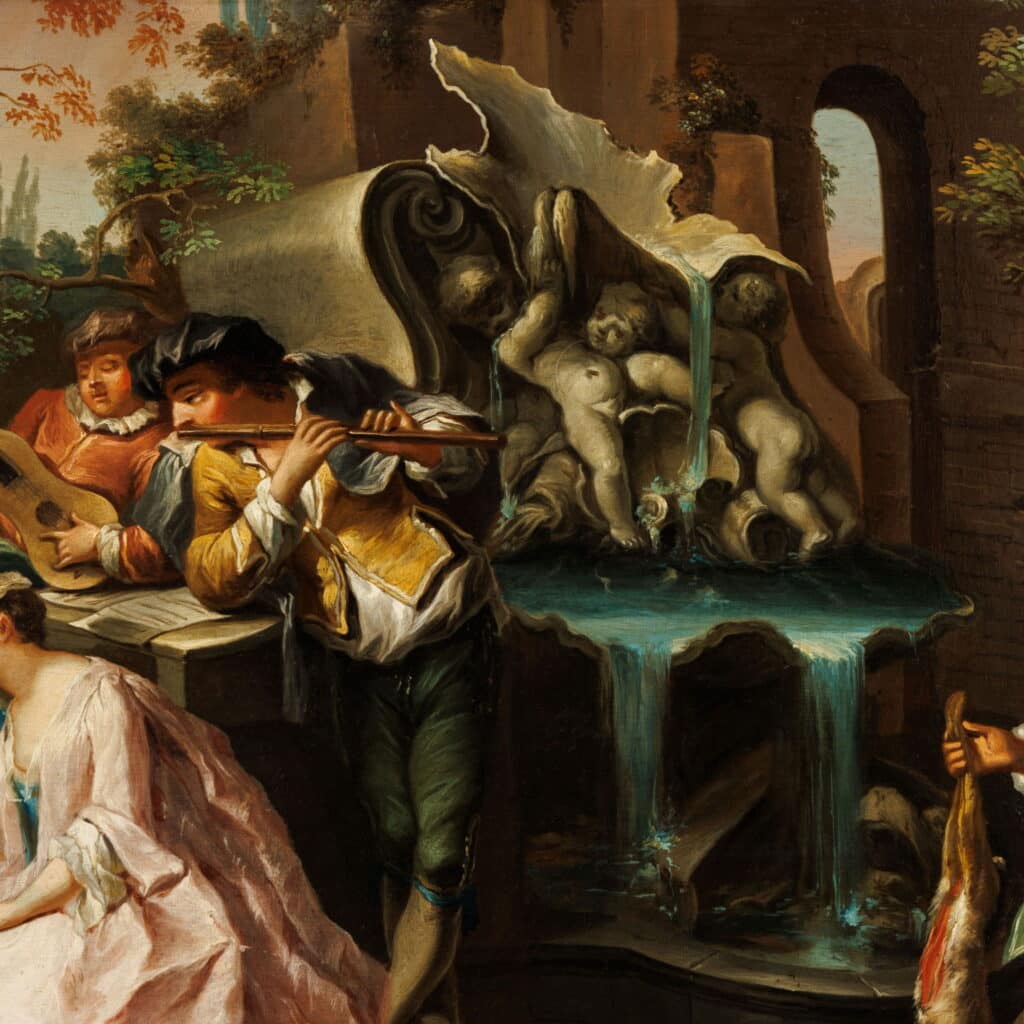Description:
The scene depicts a party inside a walled park with arched openings that open onto the countryside, and decorated on the right with an amphora on a small column and in the centre, behind the figures, with a gushing fountain, with statues of cherubs and shells.
Two couples of richly dressed ladies and gentlemen entertain themselves gallantly, surrounded by servants; one of the men is playing the violin, crouched in front of his lady who, flanked by the damsel, follows the melody on the score supported by the moretto at her side, while two musicians accompany the play with the flute and a mandolin; the other couple, in an attitude of intimate dialogue, listens on the left, while on the right the hunter returning from hunting also observes the scene.
Dimensions: 52 x 123 cm (with frame 61 x 131 cm)
CODE: ARARPI0196018
Historical-critical analysis:
In the scene, the rich dress of the lady in the center stands out in particular, characterized by the large rear folds falling from the shoulders to create a cloak. This dress corresponds to what was called “robe à la Watteau”, from the name of the French painter Antoine Watteau who was the first to portray ladies wearing this model.
Antoine Watteau (1684 -1721), French painter considered one of the most influential French exponents of Rococo painting, was the forerunner of the pictorial genre of gallant scenes, a genre that developed in France from the end of the 1600s and continued throughout the following century.
The gallant scenes could be considered as the aristocratic version of genre scenes: characterized by music, dances, pleasant conversations between ladies and gentlemen surrounded by servants, they tended to enhance the costumes, the fashionable clothes, the environments of the upper class, transmitting a sort of detachment from real times and places, projecting the spectator into an almost theatrical atmosphere, made up of gestures, looks, colors and stage lights.
Moreover, Watteau, together with the cycles of the Fêtes galantes, also distinguished himself for those inspired by the theater, absorbing the passion for the scenes and characters of this environment from Claude Gillot, the Parisian painter of theatrical subjects in whose workshop Watteau trained between 1702 and 1707/1708.
The panel of the painting presented here is also decorated on the back with a “chinoiserie” style motif, suggesting that this side too should have been visible, for example by acting as a cover for an openable piece of furniture.
Also on the back is the stamp of Pietro Accorsi (1891 -1982), the great antiquarian and collector from Turin who, thanks to an exceptional artistic intuition, in seventy years of work recovered thousands of dismembered and dispersed works of art and established himself as a consultant to collectors, dealers, art institutions of all nationalities.
- Gallant party in the park. French school. Mid 18th century

Antiques, Art and Design
FineArt is the new ambitious Di Mano in Mano project that offers an exclusive choice of antiques and design works, presenting them for their singularity and uniqueness.

